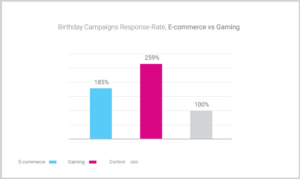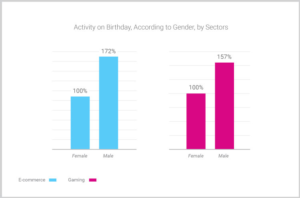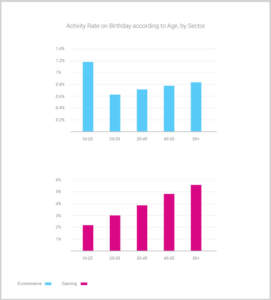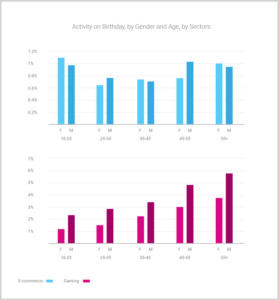The Good Ol’ Campaign: Birthdays Still Matter
November 10, 2017Birthday emails are one of the most-common tricks up a marketer’s sleeve. New Optimove research probes just how well they still perform.
Blow out the candles, cut the cake, and go straight to your inbox to open your email. The birthday email is one of the best-performing personalized marketing campaigns, and has been for years. On that special day, this gesture strikes us all at our core — though few willingly admit — all we want is just to be remembered.
But is the birthday email still relevant? A recent research done by Optimove gathered new data that showed the birthday email performs better than ever. Direct emails tied to birthdays get the highest response rates, compared to many other customer-related communications. The data was received from over 1 million birthday campaigns sent by businesses since mid-2016, and whether consumers received coupons, free delivery, a gift or else, they all revealed their effectiveness. the new data was gathered from over 6 million customers in the gaming industry and more than 1.2 million from the e-commerce field.
Across the Sectors
The first thing worth mentioning is that birthday campaigns are statistically significant, and when compared to a control group (people who did not receive a birthday campaign/discount), the campaign significantly affected those who received a shout out.
The chart below shows the response rate for test and control groups (the test receives the campaign with a discount and the control doesn’t), and the percentage in which the test group is greater than the control.

First, we separated gaming and ee-commerce. Although there was a higher response rate in gaming, we can see clearly how well birthday campaigns perform in the e-commerce sector, as well.
After recognizing that birthday campaigns have a powerful impact on customer behavior, we wanted to examine how different groups react to these campaigns. When we implemented gender segmentation, we found that in both gaming and e-comm, men are more active on their birthday than women. The numbers in the chart show the exact percentage of men who were more active (new word) on their birthdays in contrast to women from those groups.

We can see from the chart that in gaming, men are 57% more active than women, and in e-commerce, they’re 72% more active (new word) than the women.
Men of a Certain Age
Our next segmentation is according to age. Here, gaming and e-commerce perform differently. As seen in the charts, there is a clear trend in gaming; the older the participant, the more activity on their birthday (to put it simply, people in higher age groups are more active than their younger counterparts). In e-commerce, however, that is not the case. The most active groups are the youngest, and then activity drops to the lowest point and raises slightly as age increases.

In gaming, the trend is consistent. Men order more than women in all age groups, and the trend stays the same (more active as age goes up). In e-commerce, the trend is similar, but we see that in some age groups, women order more than men.

Attempting to explain these numbers is more of a behavioral thing. Young people tend to be more involved on their birthday, and therefore, are less probably to play online casino games, but will take the time to treat themselves and place an order.
To sum it up: putting age, gender and sector aside, overall, people respond well to birthday campaigns. In this ever-changing world of marketing where marketers must be agile and adapt quickly, it’s important to tailor these campaigns to customers’ expectations, all while utilizing technology to reach specific targets.


